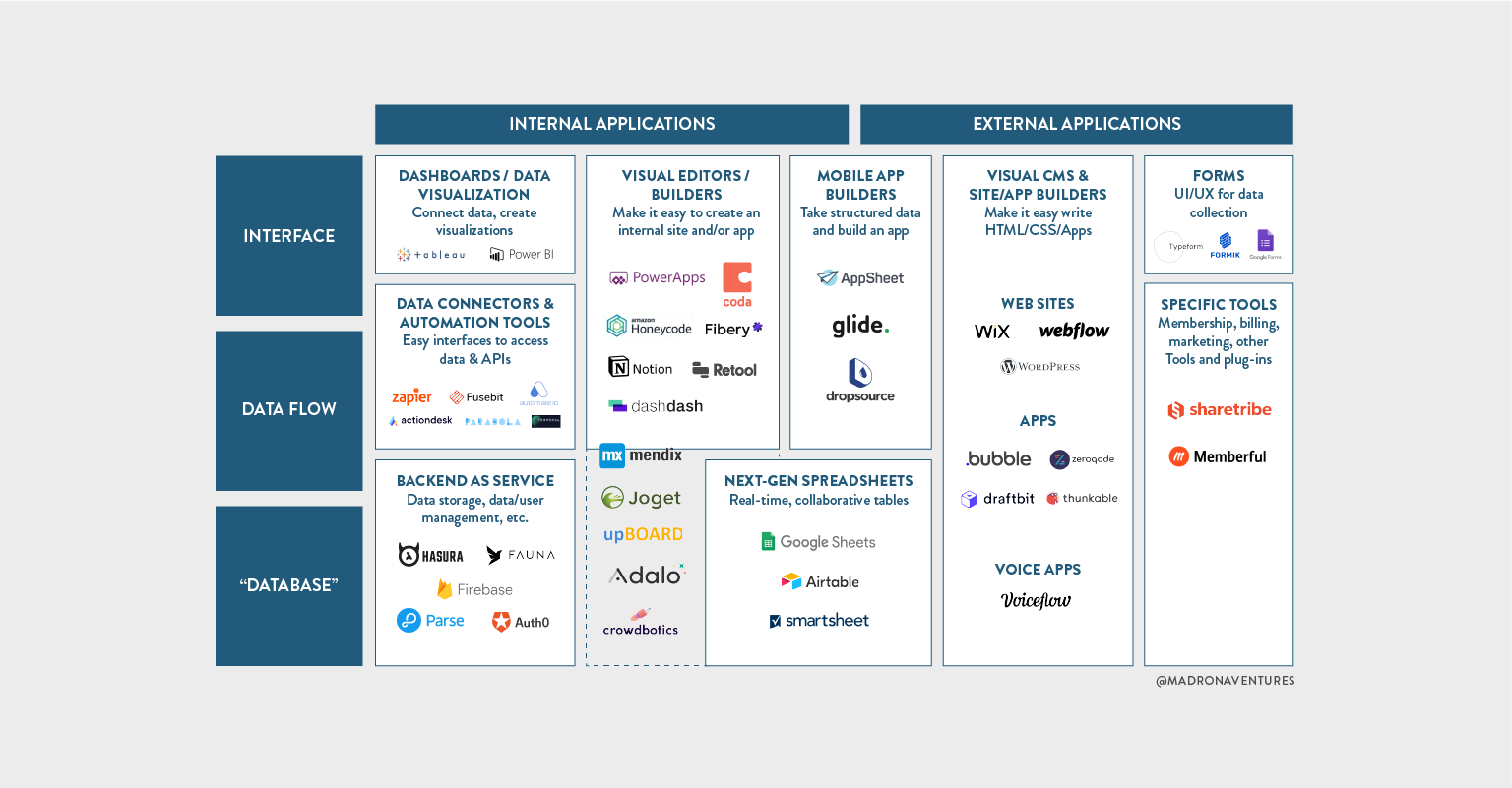Develop Open System Databases Quickly with the very best No-Code Equipment Available
Develop Open System Databases Quickly with the very best No-Code Equipment Available
Blog Article
Discover How Scalable Databases Can Be Used Without Coding to Boost Your Service Operations
In today's hectic service setting, the ability to manage and evaluate data efficiently is critical. no-code. Scalable databases, specifically when coupled with no-code solutions, offer a transformative approach that encourages non-technical customers to streamline operations.
Comprehending Scalable Data Sources
Scalable databases are crucial for modern business procedures, allowing organizations to effectively take care of boosting quantities of data without sacrificing performance. These data sources are created to adjust and expand to the transforming needs of a service, guaranteeing that they can manage bigger datasets and even more intricate questions as organizational needs develop.
Comprehending scalable data sources entails identifying their 2 primary types: vertical scaling and straight scaling. Vertical scaling, or "scaling up," includes including even more power (CPU, RAM) to an existing web server to enhance performance. Conversely, horizontal scaling, or "scaling out," involves including extra web servers to disperse the load, which typically leads to greater flexibility and fault tolerance.
One more vital facet is the design of scalable databases, which can be either non-relational or relational. Relational data sources, such as MySQL and PostgreSQL, are structured and use SQL for queries, while non-relational databases, like MongoDB and Cassandra, provide even more versatility with unstructured information.
Ultimately, comprehending scalable databases is important for services aiming to leverage information as a calculated possession, enabling them to remain affordable in a significantly data-driven atmosphere.

Benefits of No-Code Solutions
Unlocking the capacity of no-code remedies empowers services to streamline operations and improve performance without the need for comprehensive programming understanding. These systems permit non-technical users to produce, customize, and take care of databases easily, hence equalizing access to technology across teams.
One of the main benefits of no-code options is their rate of execution. Businesses can rapidly release applications and automate procedures, significantly decreasing the time spent on growth cycles. This agility enables organizations to respond quickly to market changes and customer requirements, cultivating an affordable side.
In addition, no-code systems lower reliance on IT departments for daily tasks, allowing technical groups to concentrate on more intricate projects that require specialized abilities. This change not just enhances source allocation yet additionally advertises advancement within the company.
Cost-effectiveness is an additional advantage, as no-code remedies can lower advancement and upkeep expenditures. By decreasing the requirement for coding expertise, companies can harness the capabilities of their existing labor force without the overhead of working with added workers.
Popular No-Code Database Equipment
The rise of no-code solutions has actually caused the development of different data source devices that accommodate businesses looking for efficiency and accessibility. These tools encourage individuals with limited technological know-how to produce, take care of, and adjust databases seamlessly.

Caspio stands out for its capacity to develop web applications without any coding. It permits organizations to produce durable databases and deploy applications promptly, providing to different industry demands. In a similar way, Flair uses user-friendly user interfaces and effective data administration abilities, allowing organizations to construct custom-made applications customized to their process.

Use Instances in Business Workflow
How can services leverage database devices to improve their operations? Scalable databases provide organizations with powerful capabilities to manage and assess data without the need for comprehensive coding expertise. These devices can streamline various business procedures, inevitably leading to enhanced performance and productivity.
One popular use situation is customer relationship administration (CRM) Companies can use scalable data sources to track customer communications, choices, and comments, allowing tailored communication and better service. By systematizing this details, groups can team up much more properly and react to consumer needs in real-time.
One more considerable application is inventory administration. Business can use no-code database devices to view it keep an eye on stock degrees, track shipments, and projection demand. This ensures optimal supply levels, lowers waste, and minimizes stockouts.
Furthermore, task management can benefit from scalable databases by permitting teams to manage jobs, due dates, and sources in a combined system. With real-time updates and data visualization, project managers can make informed choices.
Getting Going With Execution
Applying scalable data sources in organization operations requires an organized method to make sure effective assimilation and application. The primary step is to perform a complete requirements analysis, determining certain service needs, information types, and anticipated development patterns. This fundamental understanding will direct the option of the suitable data source option.
Next, select a straightforward, no-code data source system that aligns with your functional goals. no-code. Several contemporary remedies provide user-friendly interfaces, permitting non-technical customers to manage data effectively. After choosing a platform, develop a clear data architecture that describes just how data will be organized, accessed, and preserved
Training is crucial; guarantee that team participants are outfitted with the required abilities hop over to here to utilize the database. Take into consideration giving tutorials or workshops to familiarize staff with the system's performances.
Verdict
Finally, the integration of scalable data sources via no-code options offers significant advantages for organization operations. These systems equip non-technical users to efficiently take care of and examine data, promoting improved decision-making and partnership. By adopting devices such as Airtable and Concept, companies can enhance procedures and minimize reliance on IT sources. Inevitably, leveraging these modern technologies can bring about enhanced efficiency and operational performance, placing organizations for continual growth in an affordable landscape.
One popular no-code database tool is Airtable, which combines the functionality of a spread sheet with the power of a data source.How can organizations utilize data source tools to enhance their operations? Companies can use scalable data sources to track client interactions, choices, and comments, making it possible for customized communication and better solution.Implementing scalable data sources in service procedures needs a structured method to guarantee effective integration and use.In verdict, the combination of scalable data sources with no-code services offers significant benefits for service procedures.
Report this page